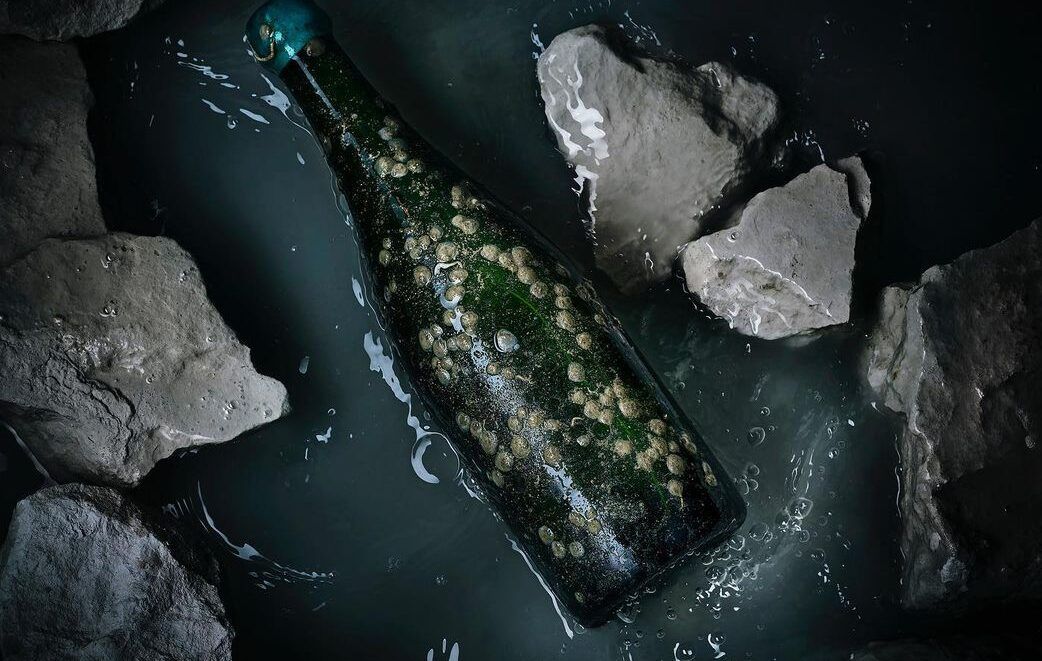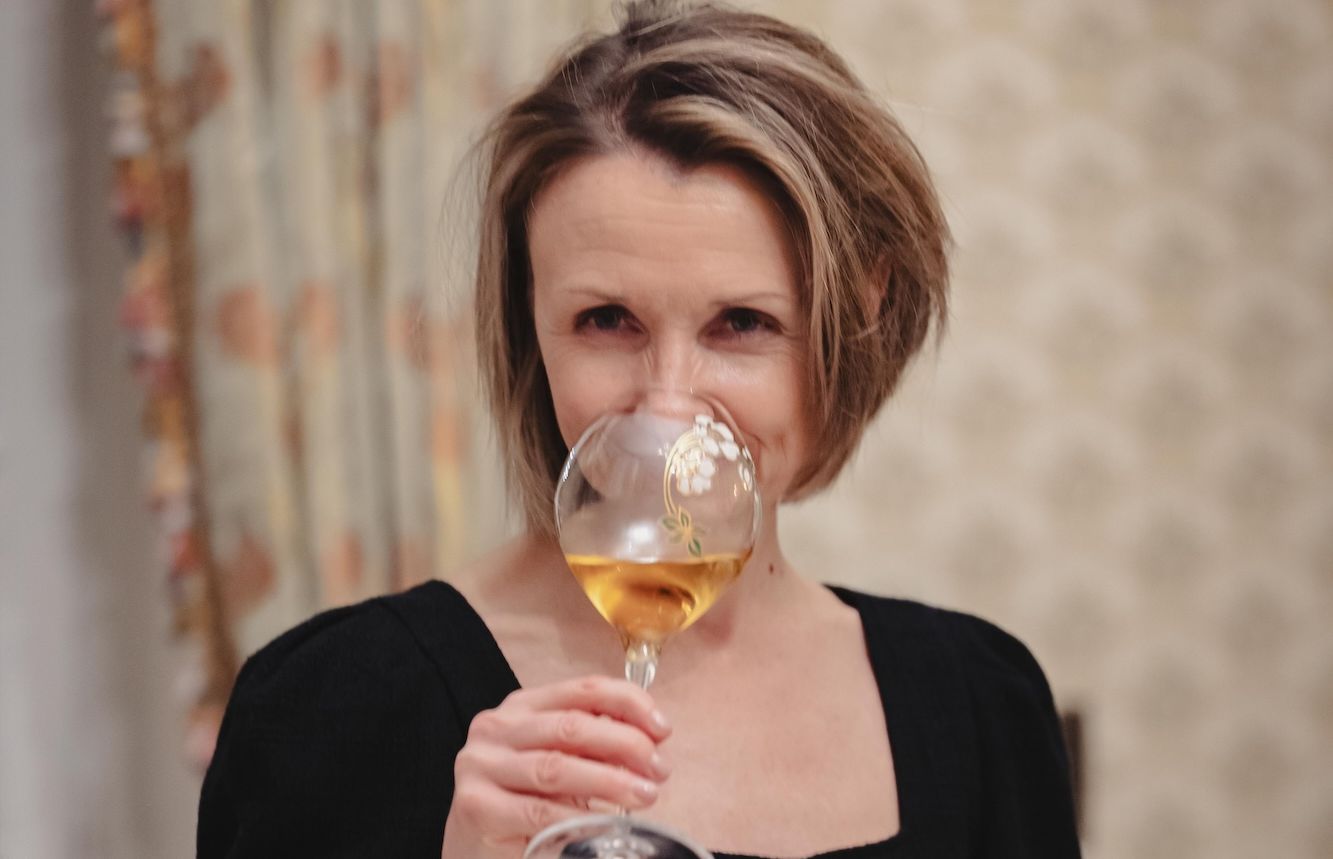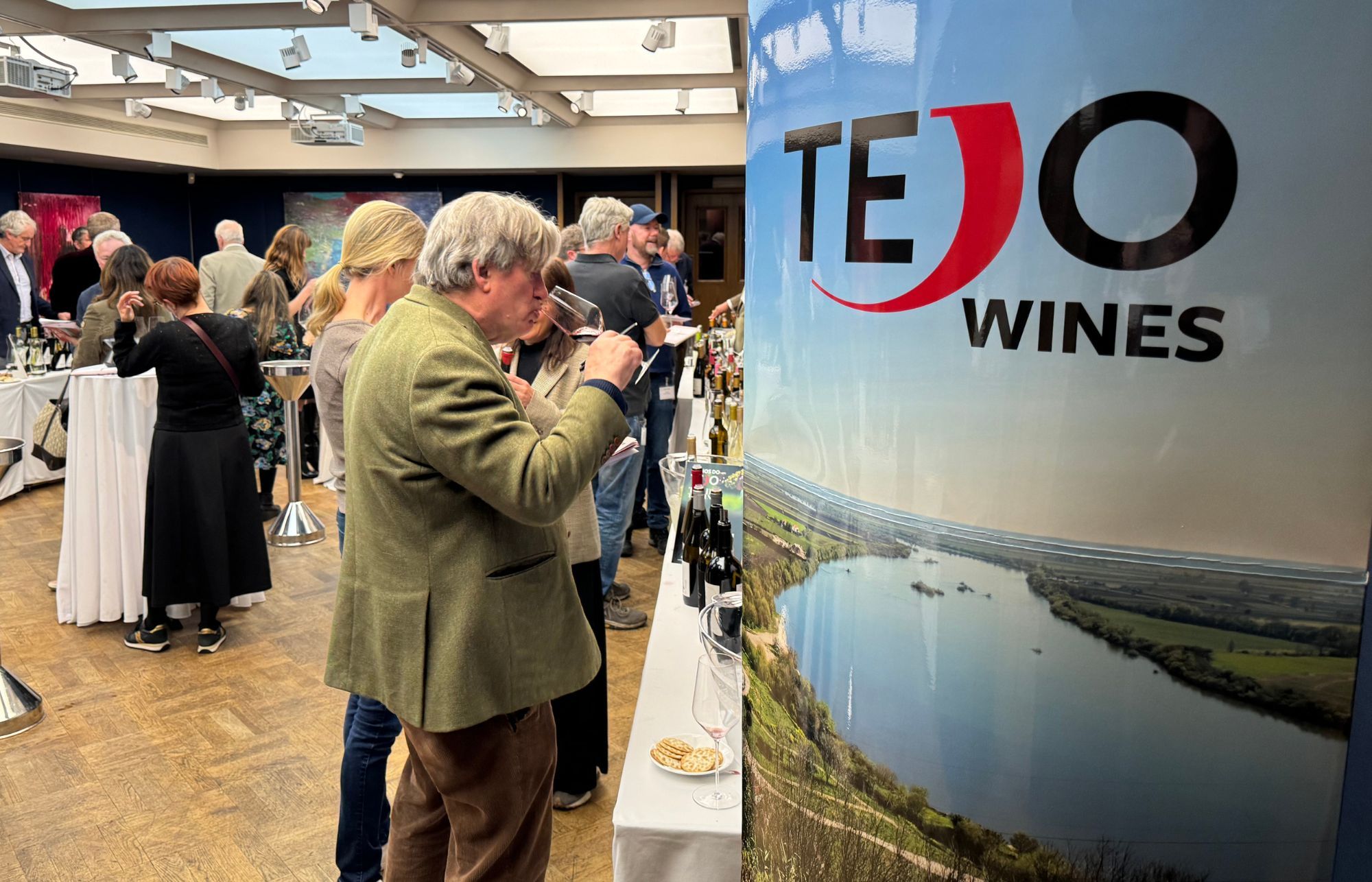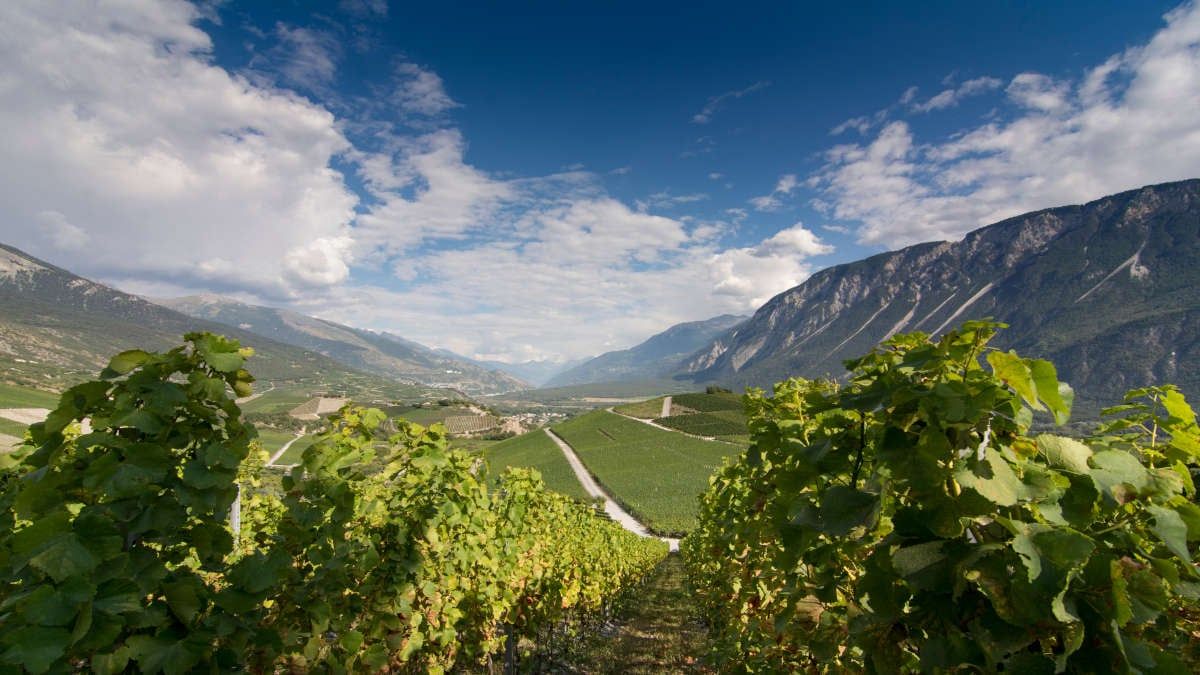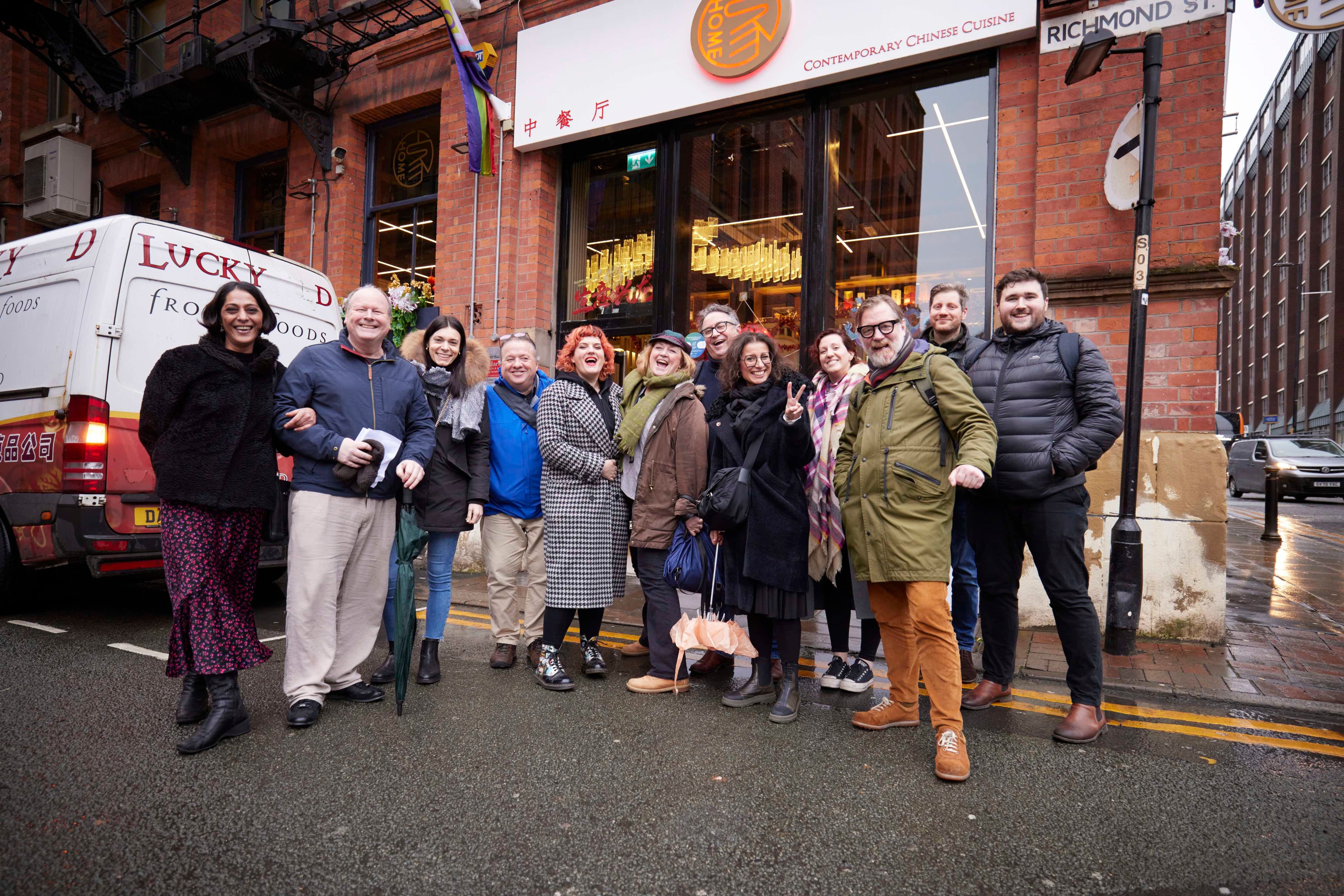“The sub-sea experiment with 60 Below has provoked a touch of charlatanism – a few wine merchants have crassly asked for seashells to be glued on to the bottles,” writes Smart.
It’s not an entirely novel trend, but Exton Park enters the record books as the first English wine producer to age its wines under the sea. The Hampshire sparkling winemaker has previewed its Blanc de Blancs 2014 vintage in two distinct guises. First comes 60 Above aged in the cellars in the normal way at its 60-acre winery in the South Downs. Then there is 60 Below which has spent 12 months at 60 metres under the sea off the coast of Brittany. Both have spent seven years on the lees, with 60 Below having spent one of those under the Channel.
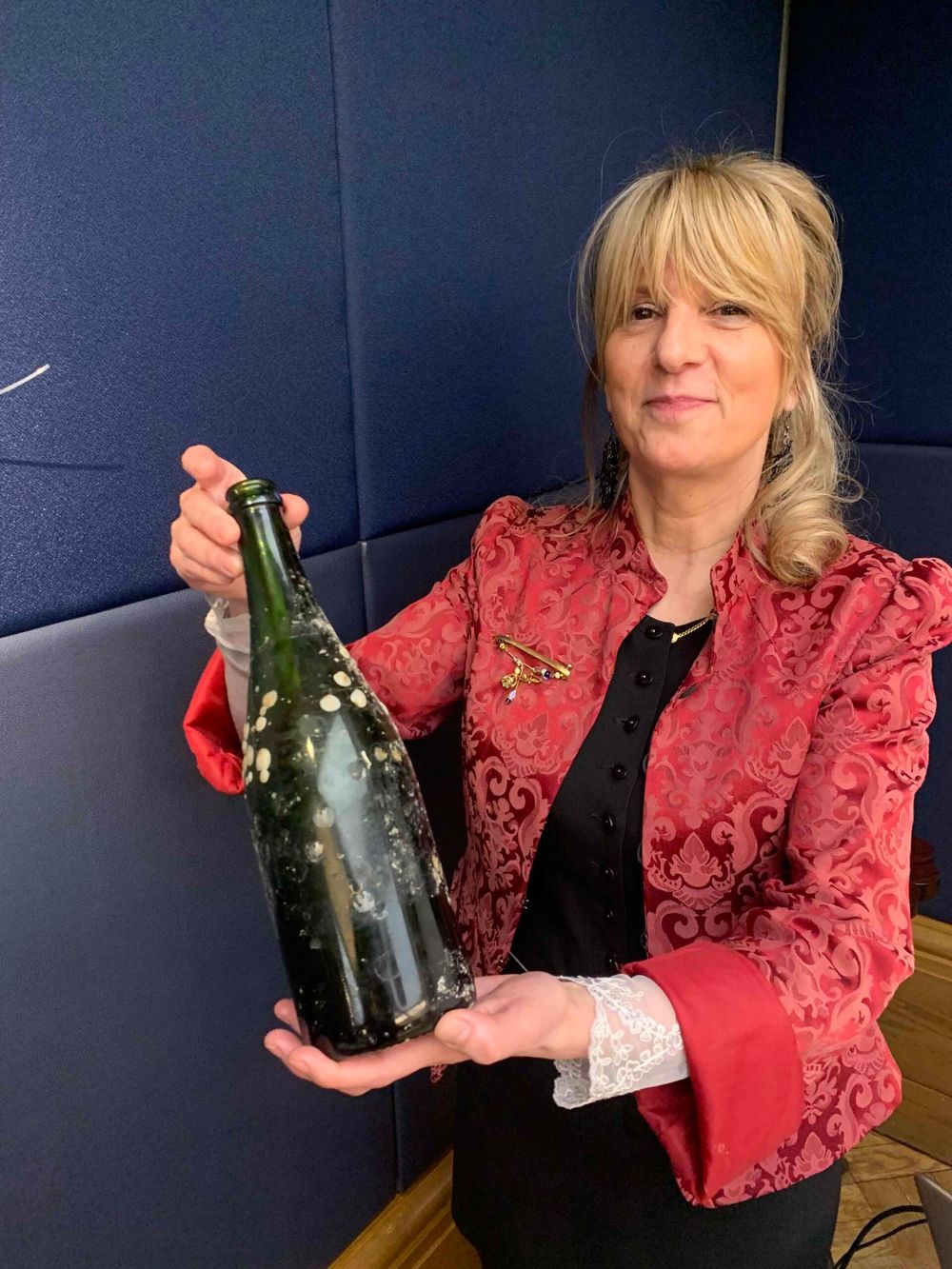
Corinne Seely with a bottle of 60 Below
Sub-sea ageing has become a thing. Apparently, tens of thousands of bottles of champagne, sparkling wine, still wine and spirits are currently ‘cellared’ at the bottom of the English Channel. Spirits are typically aged at 20 metres. But what Exton winemaker Corinne Seely calls her ‘experiment’ with the 2014 vintage is an altogether more serious proposition; the wines are hoisted to the bottom of the sea in heavy cages (or caissions) at three times that depth.
It’s a costly operation – hefting and storing each bottle on the sea floor costs around £13 a bottle, a lot even when Exton’s cheapest bottles retail at around £39. And all this takes place before disgorgement; when this very limited edition of 2014 wines rise to the surface later this year the wines in the barnacle-encrusted bottles will have had seven years on the lees.

At the preview tasting at 67 Pall Mall, Seely explains: ”We have spent the last ten years experimenting and innovating in our winery. The English wine industry is still a relatively young one, but we are not constrained by the same regulations as the champagne houses are. The ‘under-the-sea’ project is an opportunity for us to really push the boundaries”.
No one seems very sure of the precise science behind this new practice. What we know is that at 60 metres the pressure inside the bottle of sparkling wine is the same as outside; there is also complete darkness and the temperature remains pretty constant at between 10 and 13 degrees centigrade. And the bottles are gently moved by the swell and tide – the latter a rise and fall amounting to a total of 10 metres.
Now, 2014 was a good year for Exton Park in terms of yield. Both wines exhibit what one of the tasters describes as that “Hampshire tension” which adds a good deal of excitement to the wine. There is excellent acidity and some delightful saline notes plus fresh fruits. And, of course, a good few chalky notes. As The Buyer discovered on a visit to Exton in the Autumn, there best wines also display a real precision contributing to the ‘English’ signature of the Exton sparklers.
But what of the difference between 60 Above and 60 Below?
Some of my colleagues found that the 60 Above was, ironically, more zippy and saline while the 60 Below was more rounded with greater depth in the mouthfeel and having soft, riper flavours. Personally speaking I found that the sub-aqua offering of which only 180 bottles will be produced is a bit more intense while the cellar product is more subtle… it’s all a bit hard to say at this stage. In truth, both are eminently quaffable – maybe a blind tasting is needed to really clinch it.
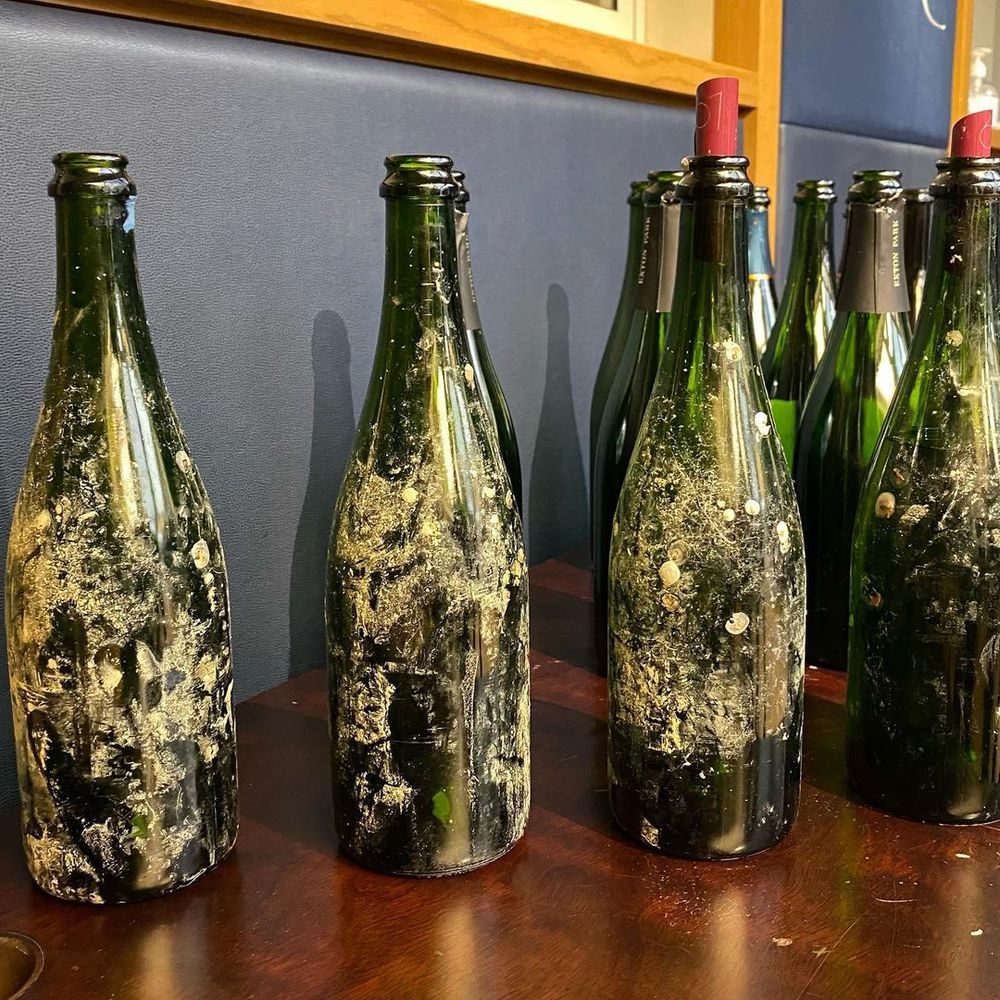
The sub-sea experiment has provoked a touch of charlatanism – a few wine merchants have crassly asked for seashells to be glued on to the bottles, something which the producers refuse to do. And a question about the eventual retail price for the rare 60 Below is met with a certain disdain. We’ll need to wait for a few more years to see whether the sub-sea experiment is the future, or not.
